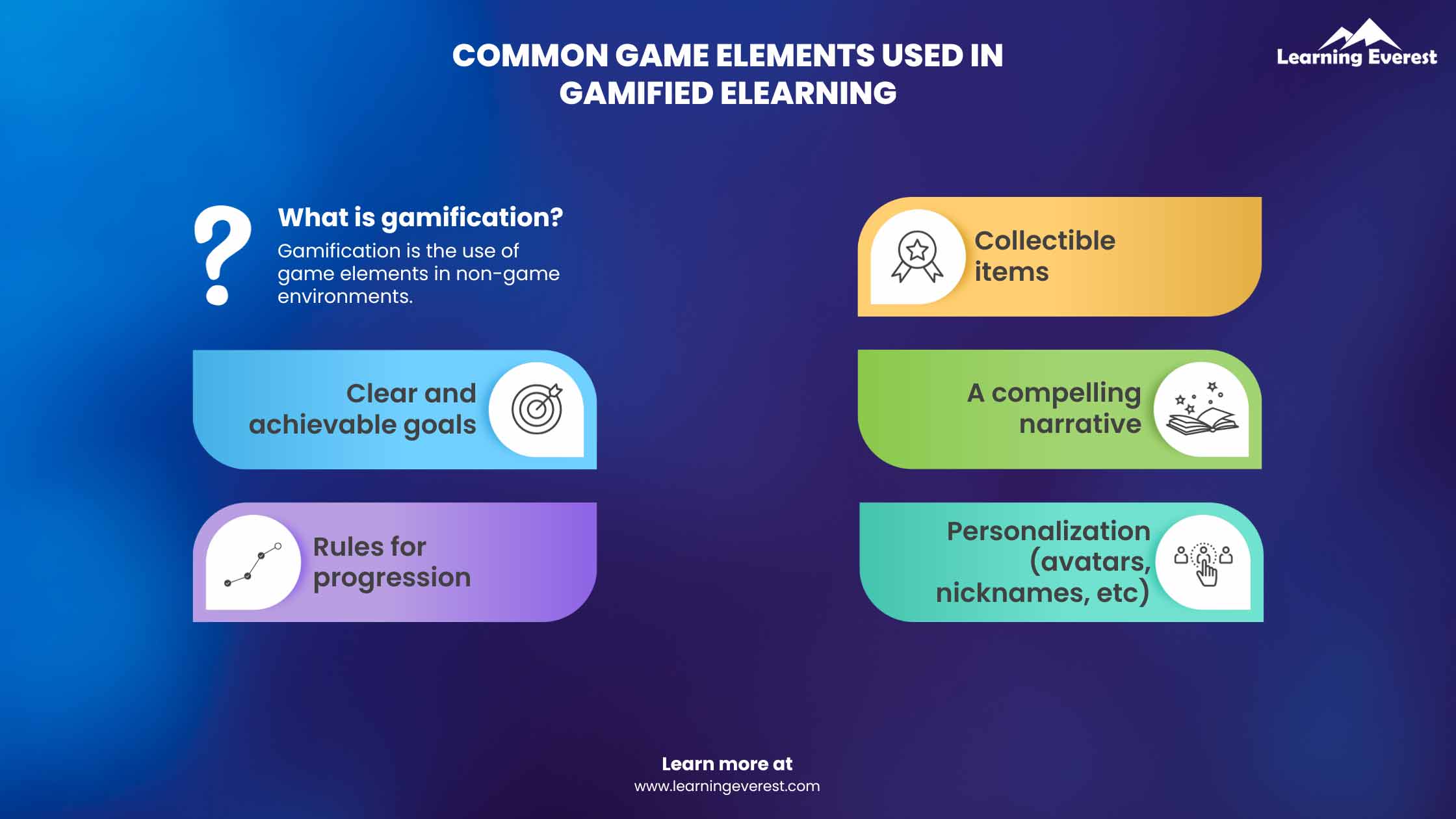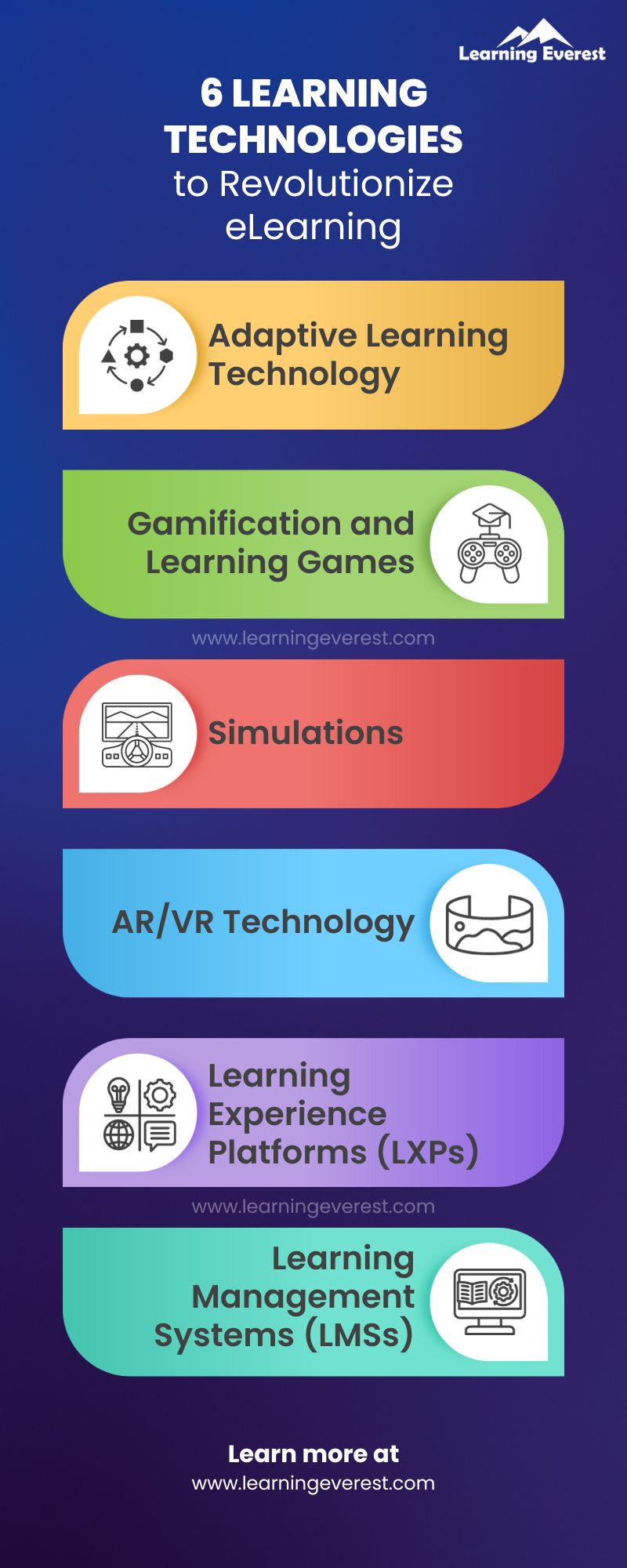Learning technologies have immensely transformed how modern users learn. They have made learning more interactive, impactful, scalable, and accessible. Learning technologies greatly enable both eLearning and face-to-face learning and are thus a valuable addition to L&D departments and educational institutions. This article will look at some of the most innovative learning technologies that influence and improve learning experiences greatly.
Table of Contents
What are Learning Technologies?
Before we begin, let us establish a working definition of learning technologies. A learning technology is any technology that is used to enhance learning and assessment. A learning technology, thus, aims to improve learning experiences through technological innovation. Learning technologies can include tools, modes of delivery, use of multimedia, artificial intelligence, and gadgets.
Here are six Learning Technologies that are Revolutionizing eLearning
Learning Technology No. 1: Adaptive Learning Technology
Adaptive learning technology provides learners with personalized content based on their specific learning needs and challenges.
These learning technologies use AI to collect information on learners’ patterns, either by directly taking that information from learners through surveys and questionnaires or by learning how learners use and interact with their online learning environments. This information is then used to improve individual learners’ learning experience through appropriate interventions.
Some applications of adaptive learning technologies include personalized feedback, personalized content suggestions, custom-curated content, personalized learning journeys, and more.
For example, Google is currently testing an interactive assignment feature on Google Classrooms, which will allow learners to gain more customized instruction through real-time feedback while working on an assignment.
Learning Technology No. 2: Gamification and Learning Games
Another great use of learning technologies is gamification and learning games. Gamification uses game elements in non-game environments. Gamification is a versatile technique that can make any virtual or non-virtual environment more fun, engaging, and fresh.
Gamification is used in learning environments to make the learning experience more engaging for learners. Some common game elements used in eLearning gamification are:
- Clear and achievable goals
- Rules for progression
- Collectible items rewarded on completing tasks, scoring points, etc., such as badges, currencies, and other items that reflect the game
- A compelling story or narrative that progresses as the learner progresses in the course/game
- Personalization, like avatars, nicknames, titles, roleplaying etc.

Common Game Elements Used in Gamified eLearning
While gamification introduces game elements to non-game environments, there are also fully immersive learning games where learning primarily takes place by playing through a game. However, unlike typical games, learning games still retain the teaching aspect and have a well-defined learning journey integrated into them.
While gamified learning experiences are usually made using a mix of graphic design, video editing, and rapid authoring tools, learning games are typically more complex to make. They are built using programming languages and development tools.
Learning Technology No. 3: Simulations
Simulations are another great way to integrate learning technologies into an eLearning experience.
Simulations are virtual environments that mimic a learner’s eventual real-life working environment and setting. Simulation-based learning is a form of experiential learning where learners get to witness how their actual working environment might function and/or look.
Simulation-based learning is a great way to get learners to practice professional skills in safe and controlled environments. This protects learners, the organization, and other individuals if the work involves dealing with other people (e.g., healthcare).
In simulations, learners are free to explore and learn. They can make mistakes and learn from them in a controlled setting without creating real-world consequences. They also get relevant opportunities to practice their skills and gain more confidence in their professional abilities.
There are many learning technologies involved in building simulation-based learning courses, including rapid authoring tools, screen recording software, photo and video editing tools, high-quality photography tools, as well as an experienced team of SMEs who understand the contexts and scenarios essential for learners to experience in the simulated learning environment.
Learning Technology No. 4: AR/VR
Augmented and virtual reality, commonly known as AR/VR, are emerging learning technologies that are increasingly being integrated into the learning process.
AR/VR creates a highly immersive learning experience by either presenting learners with a fully virtualized learning experience or modifying the learner’s immediate environment digitally by overlying elements onto it.
Unlike other eLearning, AR/VR learning technologies cannot be deployed on flat screens and monitors, such as those of PCs, laptops, tablets, and mobile phones. Instead, AR/VR-based learning requires specialized AR/VR glasses and headsets that learners need to wear while learning.
The design principles within an AR/VR learning environment also change as elements of spatial design and navigation need to be incorporated. Thus, the format in which the learning is presented also needs to be re-imagined for AR/VR-based learning experiences.
Despite its challenges and special requirements, AR/VR learning is revolutionizing existing learning conventions. These futuristic learning technologies are used in many applied professions, such as medicine and aviation.
Learning Technology No. 5: Learning Experience Platforms (LXPs)
LXPs are another set of emerging learning technologies that are modifying how eLearning is delivered to learners.
LXPs are learning platforms that use AI to aggregate and recommend content to learners based on their needs. As a result, LXPs create highly personalized learning experiences based on the information they gather about learners’ requirements and usage patterns.
Learning Technology No. 6: Learning Management Systems (LMSs)
LMSs are widely used and well-known learning technologies that are used to house, deploy, schedule, and track learning.
As the name suggests, they are a versatile learning management tool that makes distributing learning content much easier on the administrative side. LMSs also support learner assessment and credentialing. At the same time, they make learning more structured for learners, eliminating unnecessary decision-making and giving learners clear learning pathways.
Modern LMSs are also cloud-based, making them accessible from anywhere as long as the user has login credentials.
Benefits of Learning Technologies
Now that we have looked at some notable learning technologies, let us explore some of their benefits.
Benefit No. 1: Learning Technologies Create Versatile Learning Experiences
It enables organizations to provide its learners with versatile learning experiences that fit their interests and needs. This helps make learning more engaging and relevant. With tools like gamification, simulations, and AR/VR technology, learners have access to immersive training materials that can significantly improve the quality of the learning they receive.
Benefit No. 2: Learning Technologies Cater to the Needs of Modern Learners
Learning technologies modernize learning, making it more familiar and intuitive for modern learners. In the current digital age, learners are more comfortable with digital sources and methods of learning than with traditional pen-and-paper learning. Hence, it enables educators and trainers to develop learning materials that modern learners will have an easier time connecting with.
Benefit No. 3: Learning Technologies Personalize Learning
AI has made learning technologies more adaptive and nuanced. With adaptive learning and LXPs, learners can now get customized learning experiences that also add value. With AI learning technologies, learners can get personalized content and feedback, breaking away from pre-defined learning pathways in favor of individualized interventions.
Conclusion
Learning technologies transform and improve learning experiences, making them more personalized, engaging, and interesting for modern learners. They also make eLearning more applicable in fields where it previously was not a potent supplement or replacement to traditional applied learning, such as medicine. Hence, with emerging learning technologies and innovatively using existing ones, eLearning as a whole is bound to mature as a field.
Infographic

6 Learning Technologies that are Revolutionizing eLearning.
Knowledge Check!
Frequently Asked Questions (FAQs)
What are learning technologies?
Learning technologies are technologies that are used to enhance learning as assessment.
What are the benefits of learning technologies?
The benefits of learning technologies are as follows:
- They create versatile learning experiences
- They cater to the needs of modern learners
- They personalize learning
What are some examples of learning technologies?
Some examples of learning technologies are:
- Adaptive learning technologies
- Gamification and learning games
- Simulations
- AR/VR
- Learning experience platforms
- Learning management systems





